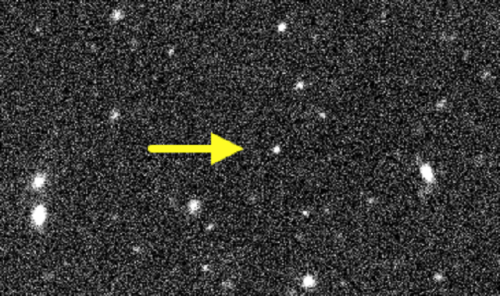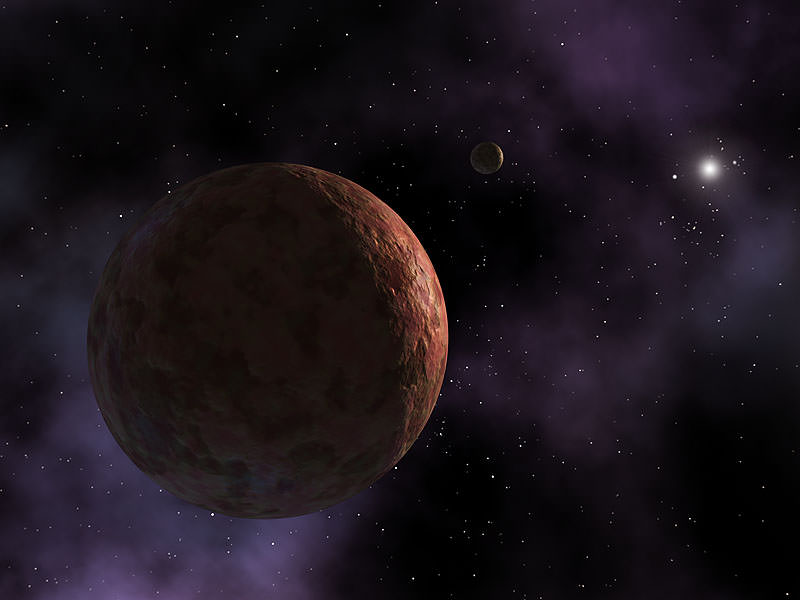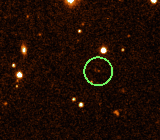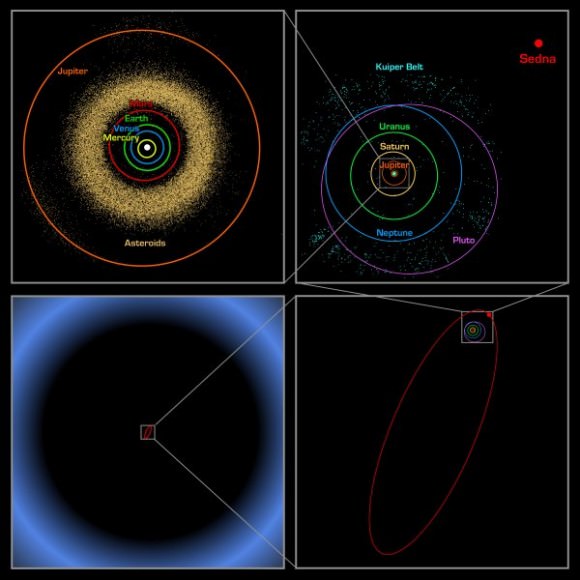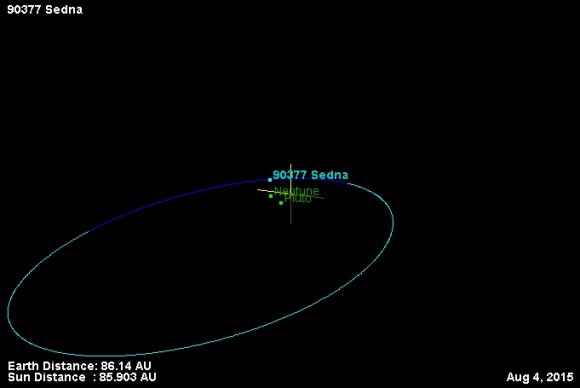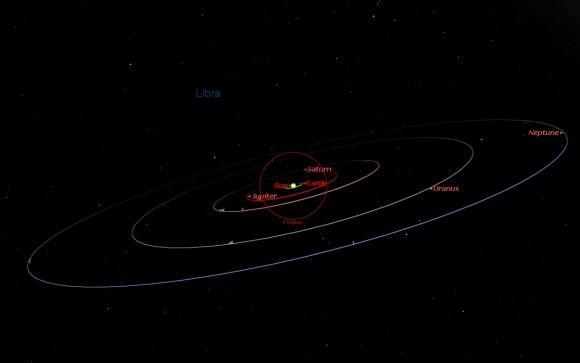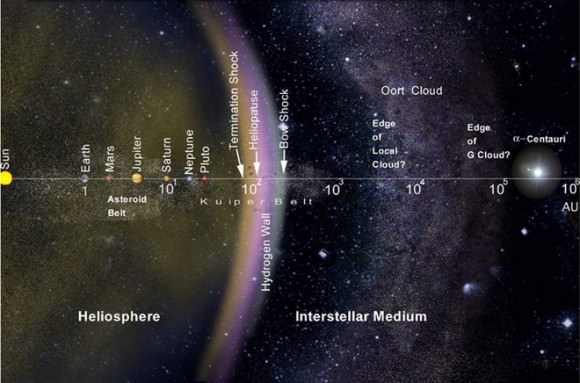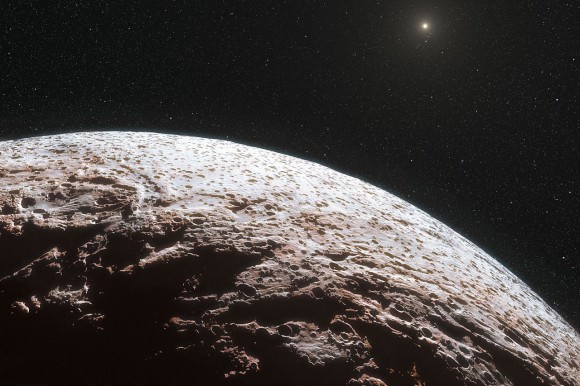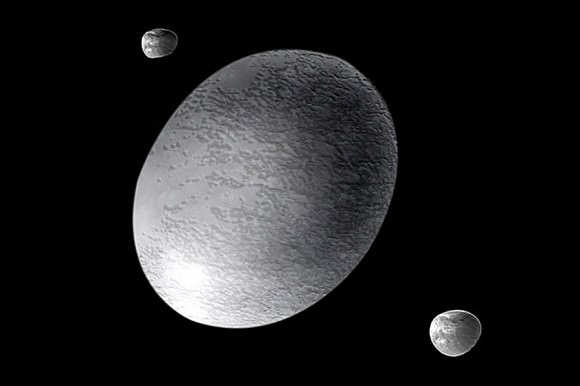It has been estimated that there may be hundreds of dwarf planets in the Kuiper belt and Oort Cloud of the outer Solar System. So far we’ve found – and actually seen – just a few. This past week, one more dwarf planet was added to the list and comes in at the most distant object ever seen in the Solar System.
This newly found world, initially named V774104, is about 15.4 billion kilometers from the Sun. At 103 AU, it is three times further from the Sun than Pluto, and is more distant than the previous record holder, Eris, which lies at 97 AU.
The discovery of V774104 was announced by one of the astronomers who found the object, Scott Sheppard, from the Carnegie Institution for Science, at the American Astronomical Society’s Division for Planetary Sciences fall meeting last week. Sheppard, along with Chad Trujillo and David Tholen used Japan’s 8-meter Subaru Telescope in Hawaii to make the find.
Astronomers say this newly spotted dwarf planet shows the depths of our Solar System.
“The discovery of V774104 is more proof that the Solar System is bigger than we thought,” said astronomer Joseph Burns from Cornell University, who was not associated with the discovery. “We need a little more time to pin down the orbit and determine the object’s exact size, but it must be big to see it at this distance.”
The size of V774104 is currently estimated to be between 500 and 1000 kilometers in diameter, which is less than half Pluto’s size.
While the size of the object is of some interest to astronomers who are searching for KBOs, even more interesting is pinning down its orbit. With its recent discovery, the orbit of V774104 has yet to be tracked for long periods of time.
If the orbit of V774104 comes closer to the Sun, such as between 30 to 50 AU, then it would be considered an icy Kuiper Belt objects which are more common among bodies like this found so far. Their orbits are more elongated because they fall under the gravitational influence of Neptune.
Of even more interest are what Sheppard called “inner Oort Cloud objects,” (also called “sednoids”). Theses bodies exist in a part of the Solar System that astronomers used to think was fairy empty. Of the two previously observed objects in this class — Sedna and 2012 VP113. — their orbits never come closer to the Sun than 50 AU, and they have a semi-major axis greater than 150 AU. The eccentric orbits of these objects have yet to be explained.
Colin Johnston from the Armagh Planetarium clarifies:
This means at their closest to the Sun they are still beyond the Kuiper Belt which lies 30-50 au from the Sun. Only two other objects in this category are known: 90377 Sedna and 2012 VP113.
They intrigue astronomers as they inhabit what was expected to be a largely empty region between the Kuiper Belt and the Oort Cloud, the Solar System’s yet to observed reservoir of comets. As well, the current highly elliptical orbits of Sednoids cannot be their original orbits, the chance of smaller bodies in such eccentric paths accreting into objects hundreds of kilometres across is fantastically low. Sednoids must have originally formed in relatively circular orbits, possibly in the Oort Cloud.
“Non-eccentric orbits seem to be the anomaly here,” Burns told Universe Today.
So, this likely means that something other than the Sun is responsible for influencing the erratic orbits of such small objects like V774104. One theory is that there might be a large planet at the outer reaches of the Solar System influencing the orbits of these distant objects.
Of course, among some crowds that brings up the hypothetical Planet X. But Burns was quick to dismiss that idea.
“While we certainly don’t understand well these objects, we may want to scatter off an object like Planet X,” he said via email.
At the AAS meeting last week, Sheppard said the likely alternative is that the orbits of these objects might reflect the primordial conditions of the Solar System, which formed more than 4.5 billion years ago. This makes them even more enticing for study, and Sheppard and his team will be keeping a close eye on V774104 to try and learn more. Nature News reported that the team plans to look for it again this week using the Magellan Telescopes in Chile, and then again in a year, to calculate its orbit and determine whether if it is an inner Oort cloud resident or an icy Kuiper Belt object.
Further reading: Nature, Armagh Planetarium,Centauri Dreams, Science.

